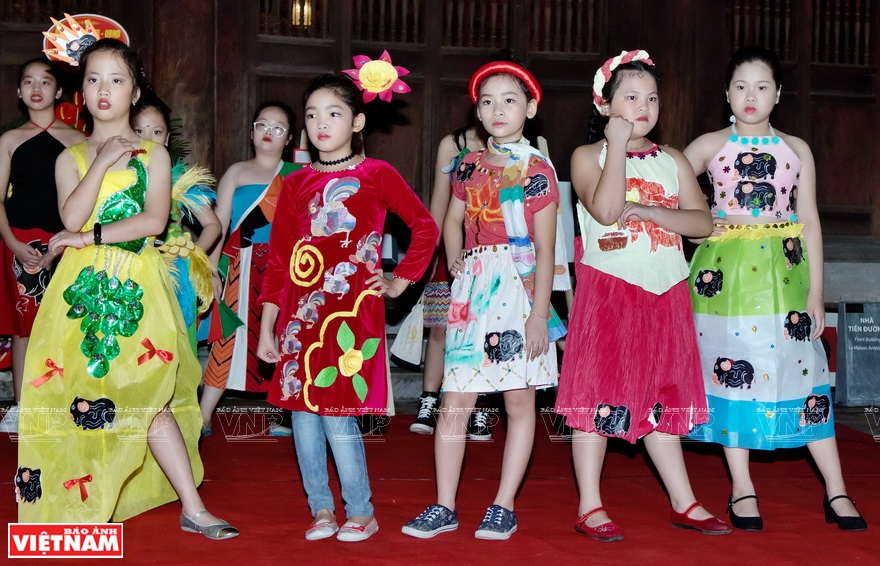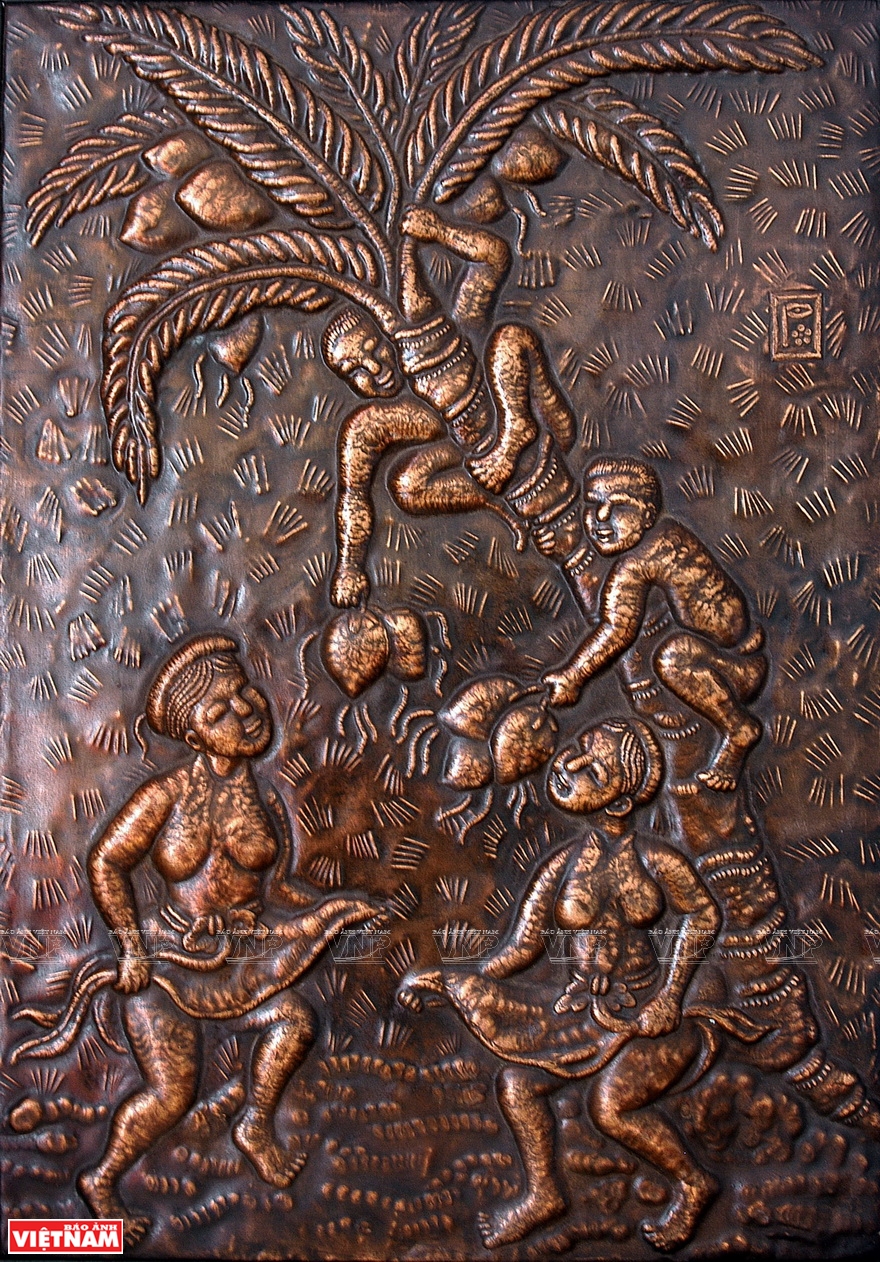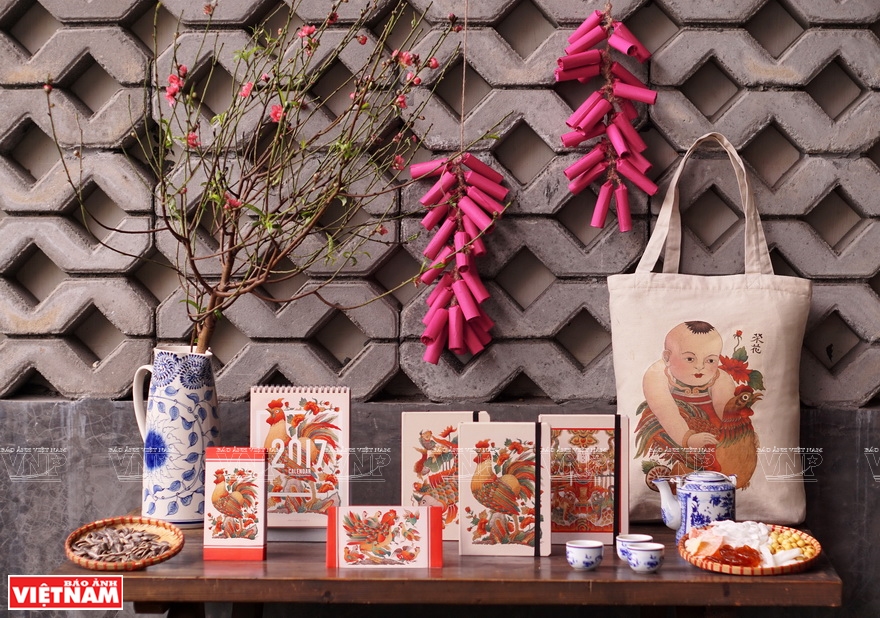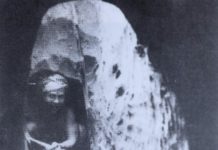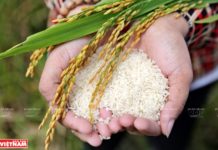Recognized as a national intangible cultural heritage, Dong Ho painting or Dong Ho folk woodcut painting is a genre of Vietnamese folk painting, stemming from Dong Ho village, Song Ho commune, Thuan Thanh district, Bac Ninh province in the 17th century.
Dong Ho painting is special because it is printed by hand entirely from woodblocks. Each painting has one woodblock for the outline and several others for printing a color. The number of the woodcuts corresponds to the number of colors a painting has. The colors of paint are processed from natural materials Vietnam. The woodblocks are engraved by hand and can be kept for many years.
Dong Ho paintings are printed on do paper made from do tree bark and covered with a layer of scallop shell powder mixed with sticky rice paste. The scallop seashell gives a sparkling white background while the rice paste makes the paper more supple and able to keep colors for a long time. To print a painting, the woodblock is applied with paint and pressed on a sheet of paper. The process is repeated for each color and the finished picture is the result of joining different colors in a certain order.
|
|
|
Dong Ho Painting Center
Website: http://tranhdongho.bacninh.com Artisan Nguyen Dang Che Artisan Nguyen Dang Tam Artisan Nguyen Thi Oanh Artisan Nguyen Huu Qua Dong Ho painting showrooms in Ho Chi Minh City Website: www.tranhdangiandongho.vn No. 612/1 Vo Van Kiet street, Cau Kho ward, district 1 No. 1648 Vo Van Kiet street, ward 16, district 8. Tel: (84) 937 307 988 Email: [email protected] |
Dong Ho paintings feature the life of northern delta inhabitants. The themes cover everything, from familiar livestock such as buffaloes, pigs and chickens, to daily activities, historical figures, cultural values, folk allegories and social commentaries. Typical Dong Ho paintings include Vinh Hoa and Phu Quy (Eminence and Prosperity), Corpulent Pig with Piglets, Hen Surrounded by Chickens, Rat’s Wedding, Scene of Jealousy, Scene of Wrestling, Scene of Catching Coconuts, Saint Giong, Ngo Quyen, and Trung Ladies.
In 1945, Dong Ho village had 17 families making Dong Ho paintings. Now, only two families of artisans Nguyen Huu Sam and Nguyen Dang Che still do the craft. The two families have conserved over 1,000 woodblocks and restored 500 ancient woodcuts.
“We were born and grew up with Dong Ho paintings as the pride of our family. When he was alive, my father used to sit silently for hours looking at hundreds of dust-covered woodblocks. He was determined that we must keep our family’s craft which is the cultural beauty of our home village,” said Nguyen Huu Qua, son of late artisan Nguyen Huu Sam.
Nguyen Huu Qua’s family has preserved and kept more than 500 woodblocks left by their ancestors. From these ancient woodcuts, the artisans create their new versions which are closer to contemporary life.
Dong Ho paintings in modern times
In recent years, Dong Ho paintings have regained popularity due to a rising demand from foreign tourists. This has largely encouraged artisans like Qua to revive and develop the craft.
Dong Ho paintings of Nguyen Huu Sam and his children were introduced at an exhibition in the US where 500 paintings were sold.
The family of Nguyen Dang Che, another artisan in Dong Ho village, has received many orders to export the folk paintings to the US and Japan.
|
Many foreign visitors choose Dong Ho paintings as souvenirs from Vietnam. Photo: VNP |
Nguyen Dang Tam, a member of Nguyen Dang family, said that at times his workshop produced 1,000 paintings a day to meet the needs of customers. Artisans of the Nguyen Dang family all received the golden hand cup for the cause of conserving Dong Ho paintings granted by the Vietnam Association of Craft Villages.
| Dong Ho paintings feature five themes: Worship, historical figures, wishes, daily life and popular stories. |
In Song Ho, there is a center for Dong Ho painting conservation located inside the workshop of Nguyen Dang Che’s family. The center has a showroom displaying thousands of Dong Ho paintings and a workshop where artisans show visitors how the paintings are made.
In Ho Chi Minh City, An Binh Education Company has collaborated with international schools in Vietnam to organize tours for students to experience the creation of Dong Ho paintings. The company has established a website to introduce the folk painting to foreign tourists at www.tranhdangiandongho.vn.
“We have renewed Dong Ho paintings from the design of boxes containing the paintings to leaflets in Vietnamese and English introducing the paintings, including the materials, process and meaning of each painting, to help foreign visitors understand the folk culture of Vietnam,” said Thu Hang, director of An Binh Education Company.
Story: Bich Van – Photos: Cong Dat & Files


